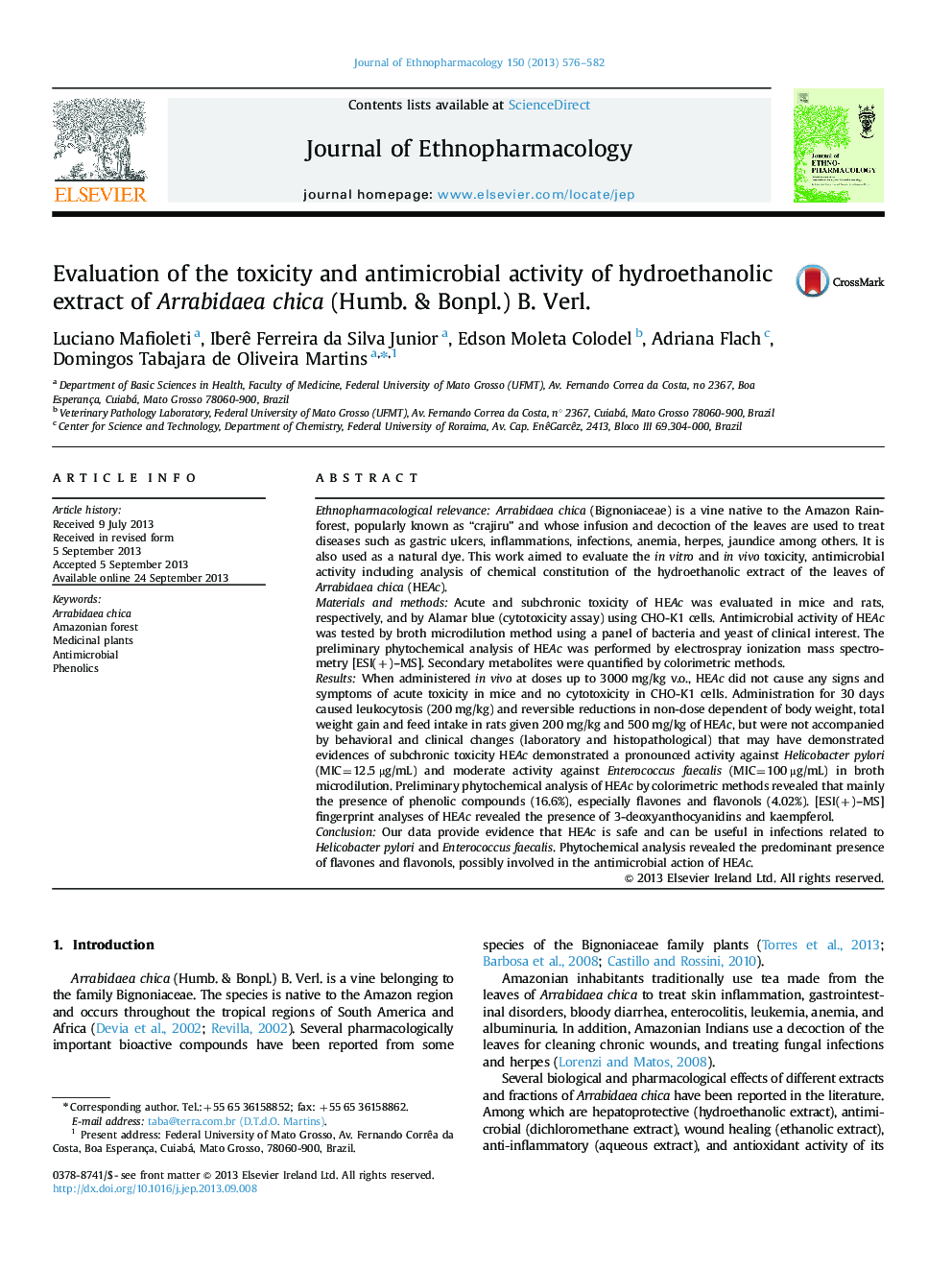| کد مقاله | کد نشریه | سال انتشار | مقاله انگلیسی | نسخه تمام متن |
|---|---|---|---|---|
| 2545445 | 1123955 | 2013 | 7 صفحه PDF | دانلود رایگان |

Ethnopharmacological relevanceArrabidaea chica (Bignoniaceae) is a vine native to the Amazon Rainforest, popularly known as “crajiru” and whose infusion and decoction of the leaves are used to treat diseases such as gastric ulcers, inflammations, infections, anemia, herpes, jaundice among others. It is also used as a natural dye. This work aimed to evaluate the in vitro and in vivo toxicity, antimicrobial activity including analysis of chemical constitution of the hydroethanolic extract of the leaves of Arrabidaea chica (HEAc).Materials and methodsAcute and subchronic toxicity of HEAc was evaluated in mice and rats, respectively, and by Alamar blue (cytotoxicity assay) using CHO-K1 cells. Antimicrobial activity of HEAc was tested by broth microdilution method using a panel of bacteria and yeast of clinical interest. The preliminary phytochemical analysis of HEAc was performed by electrospray ionization mass spectrometry [ESI(+)–MS]. Secondary metabolites were quantified by colorimetric methods.ResultsWhen administered in vivo at doses up to 3000 mg/kg v.o., HEAc did not cause any signs and symptoms of acute toxicity in mice and no cytotoxicity in CHO-K1 cells. Administration for 30 days caused leukocytosis (200 mg/kg) and reversible reductions in non-dose dependent of body weight, total weight gain and feed intake in rats given 200 mg/kg and 500 mg/kg of HEAc, but were not accompanied by behavioral and clinical changes (laboratory and histopathological) that may have demonstrated evidences of subchronic toxicity HEAc demonstrated a pronounced activity against Helicobacter pylori (MIC=12.5 μg/mL) and moderate activity against Enterococcus faecalis (MIC=100 μg/mL) in broth microdilution. Preliminary phytochemical analysis of HEAc by colorimetric methods revealed that mainly the presence of phenolic compounds (16.6%), especially flavones and flavonols (4.02%). [ESI(+)–MS] fingerprint analyses of HEAc revealed the presence of 3-deoxyanthocyanidins and kaempferol.ConclusionOur data provide evidence that HEAc is safe and can be useful in infections related to Helicobacter pylori and Enterococcus faecalis. Phytochemical analysis revealed the predominant presence of flavones and flavonols, possibly involved in the antimicrobial action of HEAc.
Figure optionsDownload high-quality image (124 K)Download as PowerPoint slide
Journal: Journal of Ethnopharmacology - Volume 150, Issue 2, 25 November 2013, Pages 576–582